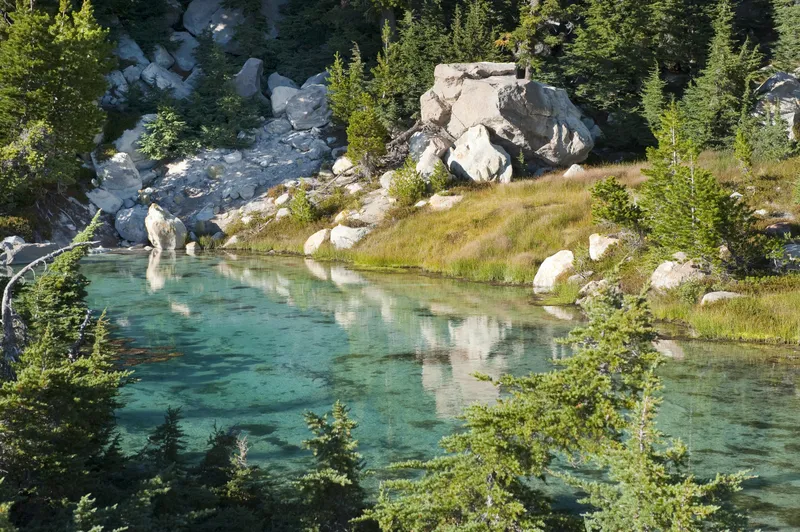Steaming sulphur vents, splattering mud pots, boiling springs—these feisty hydrothermal features prove that the earth is not sleeping in this national park near Redding. Lassen Volcanic National Park’s signature volcano, Lassen Peak, blew its top in May 1914 and its outbursts continued for three years. Now it’s dormant, and trails and overlooks give you access to see and learn about volcanic activity amid a tranquil landscape of dense woods and sparkling lakes.
Marvel at bubbling, boiling hydrothermal features at Sulphur Works or Bumpass Hell. Climb a cinder cone and photograph a swirling landscape of orange and gray pumice fields. Hike to Lassen Peak’s summit and look down into its volcanic crater. Swim or kayak in spring-fed lakes. Drive the mountain-climbing curlicues of Lassen National Park Highway (Highway 89) and stop to admire Lake Helen’s icy turquoise waters. Set up your tent under shady red firs at one of eight park campgrounds, then be dazzled by a star-studded night sky. Ride horses and soak in the hot springs pool at historic Drakesbad Guest Ranch, or book a luxury cottage at Highlands Ranch Resort, where you can take in the mountain views from your private deck. In winter, snowshoe or ski around the park’s frosty, white-blanketed wonderland.
Lassen isn’t only about fiery volcanos—it has watery attractions, too. Saunter through wildflower-filled meadows to easy-to-reach waterfalls that make perfect destinations for family hikes. Mill Creek Falls is a 3.8-mile round-trip that passes through a huge field of mule’s ears, their bright yellow flowers blooming cheerfully in July. At 75 feet tall, Mill Creek is the park’s highest waterfall (the trail begins at Southwest campground). Farther north up the Lassen Park Highway, the Kings Creek Falls hike is a 2.4-mile round-trip. The trail leads through a verdant meadow, then continues down a rocky staircase alongside Kings Creek to a boisterous 50-foot-high cataract tucked into a shady canyon.
The park, along with Lassen National Forest, is also home to a section of the Pacific Crest Trail. From the town of Chester, Lassen Rural Bus provides hikers with rides to the PCT year-round, three times a day during the week and twice on Saturdays.
Lassen Volcanic National Park is currently experiencing limited closures due to fires that have resulted in burned area hazards. Check the park’s Alerts & Conditions page for the latest.
Lassen Volcanic National Park address
38050 Highway 36 East
Park Headquarters
Mineral, CA 96063
Phone: 530.595.4480
